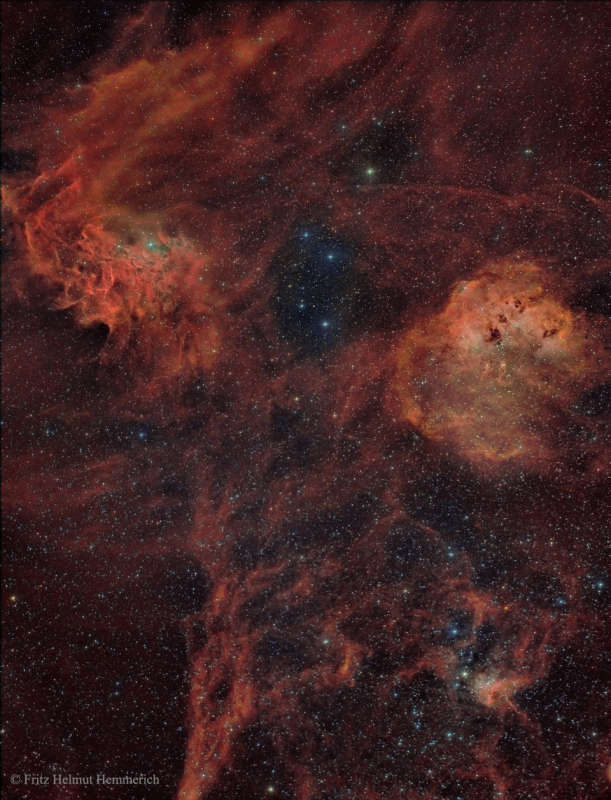Credit & Copyright: Fritz Helmut Hemmerich
Explanation:
Rich in star clusters and nebulae, the ancient
constellation of the Charioteer
(Auriga)
rides high in northern winter night skies.
Composed from narrow and broadband filter data and
spanning nearly 8 Full Moons (4 degrees) on the sky,
this deep telescopic view shows off some of Auriga's celestial bounty.
The field includes emission region
IC 405 (top left) about 1,500
light-years distant.
Also known as the Flaming Star Nebula,
its red, convoluted clouds of glowing hydrogen gas are energized by hot
O-type star
AE Aurigae.
IC 410 (top right)
is significantly more distant, some 12,000 light-years away.
The star forming region is famous for its embedded young star cluster,
NGC 1893,
and tadpole-shaped clouds of dust and gas.
IC 417 and NGC 1931 at the lower right,
the Spider and the Fly, are also young star
clusters embedded in natal clouds that lie far beyond IC 405.
Star cluster NGC 1907
is near the bottom edge of the frame, just right of center.
The crowded field of view looks along the plane of our
Milky Way
galaxy, near the direction of the
galactic anticenter.
Astrophysicists:
Browse 1,100+ codes in the Astrophysics Source Code Library
1999 2000 2001 2002 2003 2004 2005 2006 2007 2008 2009 2010 2011 2012 2013 2014 2015 2016 2017 2018 2019 2020 2021 2022 2023 2024 2025 |
Январь Февраль Март Апрель Май Июнь Июль Август Сентябрь Октябрь Ноябрь Декабрь |
NASA Web Site Statements, Warnings, and Disclaimers
NASA Official: Jay Norris. Specific rights apply.
A service of: LHEA at NASA / GSFC
& Michigan Tech. U.
|
Публикации с ключевыми словами:
Auriga - Возничий - туманность
Публикации со словами: Auriga - Возничий - туманность | |
См. также:
Все публикации на ту же тему >> | |
